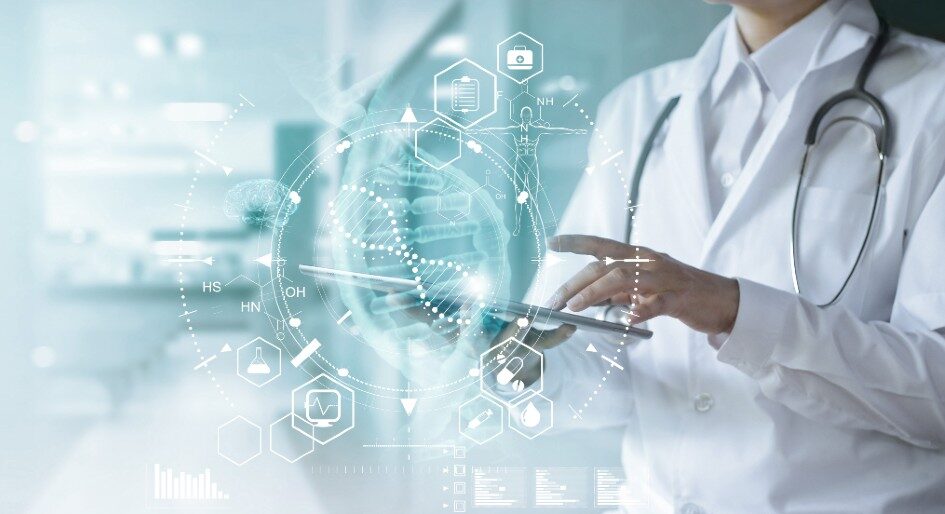Tele-health visits and virtual patient monitoring are the new reality of the health care delivery landscape. According to data from the Canadian Institute for Healthcare Information, in April 2020, physicians adapted quickly to the pandemic, with 55 per cent of patient visits, physician-to-physician consults and psychotherapy shifting to online or phone.
In this expanded model of patient care, hospitals are working smarter with their available resources and adding new surveillance technologies to better protect their patients. Some of the top health care issues today that surveillance solutions are solving include: wait times, accessibility, staff shortages, patient experiences and cybersecurity.
By incorporating traditional and new surveillance technology into clinical tasks, patient care processes are being optimized. Hospitals are able to observe the patient bed area and telemetry monitors known as the patient envelope. Conferencing with patients and families is easier. Staff can also expedite medical response times, especially in case of emergencies.
Prioritized care with connected devices
These days, video cameras are often mounted to the ceiling of a patient’s room or mobile cameras attached to IV poles and wireless carts that allow physicians to monitor their patients remotely from a central monitoring system. Video cameras may be embedded with video and audio analytics to detect signs of patient distress and alert staff.
Some facilities integrate their in-room cameras with telemetry devices monitoring their patients’ vital signs. Instead of relying solely on clinical data, medical staff can see their patients’ physiology in real-time, which may reveal early warning signs of a problem. This proactive approach can result in better experiences for everyone.
There are numerous ways to use surveillance solutions for care purposes. A good example would be implementing a remote third-level monitoring system to monitor patients. Consider a room that is staffed by paramedics and contains dozens of displays that enable health care providers to track critical details for each patient as well as other activity in and around the hospital.
The hospital boards/displays then capture and share information on an array of data, including patient vitals, medical records, the acuity score of the sickest patients, paramedic assignments, emergency department traffic, what’s transpiring at other hospitals in the area, operating room activity and capacity, and graphical mapping of ambulance locations and time of arrival.
Looking at monitors is not the same as observing the patients in person. To provide an extra level of care, hospitals can integrate network cameras into an electronic medical records system such as EPIC, including a series or protocols for visual observation that will protect the privacy of patients and their families.
A camera can be added in every patient room, so a logistics centre can visually evaluate how a patient is progressing. For example, with pediatric patients, a sudden spike in temperature or heart rate might indicate a life-threatening event, or it could simply mean that a patient is getting excited while playing a video game in bed. \
When adding video monitoring to the mix, hospitals could notice a significant drop in staff racing to non-events. The technology can also help improve medical response to actual emergencies. If paramedics were able to spot a patient having a seizure just after a nurse left the room, they could send an immediate alert to the nurse and rapid response to intervene and save the patient from brain damage.
Streamlined response protocols
There are countless situations where third-level monitoring can help achieve positive outcomes for hospital patients. During pandemics, hospitals can pivot with their network cameras and video management systems to create a more touchless way of delivering patient care.
When you’re dealing with infectious diseases, or a patient with a weakened immune system, it’s critical to minimize the risk of exposure to both the patient and staff. In this case, some hospitals have introduced mobile apps through their video management system and something like a Citrix ConnectCare environment that allows physicians to do virtual rounds.
The apps give clinicians access to the in-room cameras through their smartphones, laptops, or computers. They can digitally zoom into the bedside monitors, look at the patient’s skin tone and see how they’re behaving. The apps can also interface with mobile cameras wheeled in on wireless carts so they can conference with the patient and their family remotely, minimizing the number of times they physically step into the room.
There are so many innovative ways to use surveillance technology and equipment beyond traditional security. Whether hospitals have already implemented virtual patient observation or are now considering it, video and audio technology can act as a force multiplier now and in the future, supporting medical teams that are doing more with fewer staff and resources.
Paul Baratta is the segment development manager for health care for Axis Communications. In this capacity, he is responsible for developing strategies and building channel relationships to expand Axis’ presence in health care markets.





